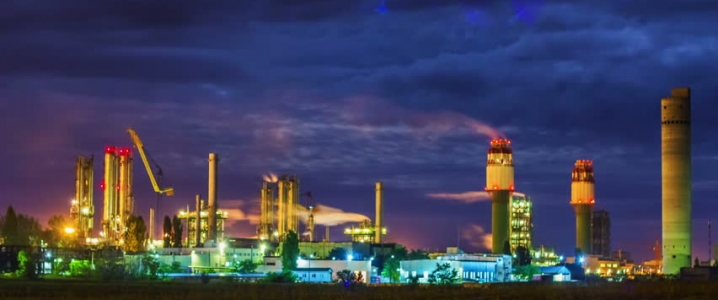The United States is set to significantly increase its capacity to produce alternative transportation fuel over the next two years.
New plants designed to produce methanol out of natural gas are expected to come on stream this year and next, the Energy Information Administration (EIA) says.
The higher methanol production capacity will not only boost the U.S. production of the fuel which can be used as an alternative transportation fuel or blended into gasoline to increase engine efficiency and cut air pollution; the higher capacity will also increase the industrial use of natural gas and ensure more, and diverse, use of the soaring natural gas production, especially in the key gas producing regions—the Appalachia basin and the Permian.
In 2019 and 2020, three new natural gas-to-methanol plants are expected to start up in the United States—two in the Gulf Coast and one in West Virginia. They will increase U.S. methanol capacity by 45 percent compared to current capacity, the EIA has estimated.
Methanol-producing plants are one of the most natural gas-intensive industrial end users because they require natural gas both as a feedstock and for processing heat. The three new methanol plants are thus set to drive growth in industrial natural gas demand in the United States through 2020. Total U.S. industrial natural gas consumption is expected to average 23.1 billion cubic feet per day (Bcf/d) this year and 23.4 Bcf/d in 2020, up from an average of 22.6 Bcf/d in 2018, according to EIA’s analysis.
In Q3 year, the Big Lake 1 methanol plant in Louisiana is expected to enter service and convert dry natural gas into about 3,800 mt/d of methanol, which may then be converted to motor gasoline.
Yuhuang’s St. James 1 methanol plant, with a capacity of 4,700 mt/d, is slated for start of operations in the middle of 2020, and would be the second-largest methanol facility in the United States. Developers are currently considering phase two of the plant and if approved, it could double the facility’s production capacity and become the largest methanol producing plant in the U.S.
In addition to the two Gulf Coast facilities, the Liberty One methanol plant in West Virginia is expected to start up this year and produce about 550 mt/d of methanol. Although the plant’s capacity will be much smaller, the proximity to the Appalachia natural gas production basin would ensure a relatively low cost of the feedstock, the EIA says. Related: The $32 Trillion Push To Disrupt The Entire Oil Industry
The methanol plants in the Gulf Coast, on the other hand, will ensure additional industrial use of the soaring natural gas production in the key shale oil producing region in the United States, the Permian. The current pipeline infrastructure will allow Permian natural gas production to reach methanol plants along the Gulf Coast and many of these plants could export methanol to China, whose methanol use in fuels has been soaring over the past decade, the EIA said.
The new methanol plants will help raise the industrial use of natural gas in the U.S. at a time when natural gas production is surging to record levels and will continue to grow over the coming years.
The EIA expects that U.S. natural gas production will have reached record levels last year. Between January and October 2018, U.S. dry natural gas production jumped by 11 percent compared with the same period in 2017, with growth driven by production increases in the Appalachian Basin, the Permian, and the Haynesville Shale.
While China is the global leader in methanol use as an alternative land transportation fuel, companies in the shipping industry have started to look into the possible use of methanol as a maritime fuel.
Earlier this month, major Dutch maritime companies—including ship owners, shipyards, manufacturers, and the ports of Amsterdam and Rotterdam—join forces to study methanol as a marine fuel as part of the Green Maritime Methanol project.
By Tsvetana Paraskova for Oilprice.com
More Top Reads From Oilprice.com:
- How Sanctions Are Helping The U.S. Become A Net Oil Exporter
- Permian Production To Break 4 Million Bpd In March
- A Worrying Trend For International Oil Giants


















